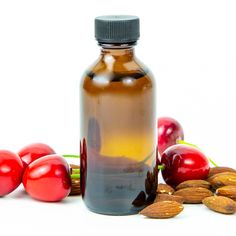Cherry oil vials have become increasingly popular in natural health and wellness circles, valued for their rich aroma, therapeutic properties, and concentrated potency. But what exactly makes cherry oil so powerful? Understanding the science behind cherry oil vials and how their potency is measured can help consumers appreciate their benefits and make informed choices.
What Is Cherry Oil?
Cherry oil is typically derived from the seeds or pits of cherries—primarily sweet or tart cherries—using methods such as cold pressing or solvent extraction. This oil is prized for its high content of beneficial compounds, including:
Fatty acids (like linoleic acid and oleic acid)
Antioxidants such as vitamin E and anthocyanins
Phenolic compounds
Natural flavor and aroma molecules
The Cherry Oil Vial is often used in skincare, aromatherapy, supplements, and sometimes culinary applications due to its nutrient density and therapeutic effects.
The Extraction Process and Its Impact on Potency
The potency of cherry oil largely depends on how it is extracted and processed:
1. Cold Pressing
Cold pressing involves mechanically pressing cherry pits at low temperatures without heat or chemicals. This method preserves the oil’s natural composition, including sensitive antioxidants and fatty acids, resulting in a high-potency product rich in bioactive compounds.
2. Solvent Extraction
Solvent extraction uses chemical solvents like hexane to dissolve the oil from cherry pits. While this method can yield more oil, it may degrade some delicate compounds or leave trace solvent residues, affecting purity and potency.
3. Refinement
After extraction, oils may undergo refinement to remove impurities, improve shelf life, or enhance clarity. However, over-refinement can strip beneficial nutrients, reducing potency.
Key Chemical Components That Drive Potency
The effectiveness and potency of cherry oil stem from its unique chemical profile:
1. Fatty Acids
Cherry oil contains a balanced mix of essential fatty acids like linoleic acid (omega-6) and oleic acid (omega-9). These fatty acids are critical for maintaining healthy cell membranes, skin barrier function, and reducing inflammation.
2. Antioxidants
Vitamin E and anthocyanins in cherry oil act as antioxidants, protecting cells from oxidative stress and free radical damage. These antioxidants contribute to anti-aging effects and support immune health.
3. Phenolic Compounds
Phenolics have anti-inflammatory, antimicrobial, and anti-carcinogenic properties. Their presence in cherry oil enhances the oil’s therapeutic potential for skin and internal health.
4. Aromatic Molecules
The characteristic cherry aroma is due to volatile organic compounds (VOCs) such as benzaldehyde, which also have mood-enhancing and calming effects when used in aromatherapy.
Measuring Potency in Cherry Oil Vials
Potency refers to the concentration of active compounds that produce the oil’s therapeutic effects. Measuring potency involves:
1. Gas Chromatography-Mass Spectrometry (GC-MS)
GC-MS analyzes the chemical composition of cherry oil, identifying and quantifying fatty acids, antioxidants, and aromatic compounds. This method ensures product consistency and potency verification.
2. High-Performance Liquid Chromatography (HPLC)
HPLC is commonly used to measure antioxidant levels, especially vitamin E and phenolic compounds, providing a detailed potency profile.
3. Peroxide Value and Free Fatty Acid Content
These tests assess oil quality and freshness. Low peroxide values indicate minimal oxidation, which correlates with higher potency and longer shelf life.
Factors Affecting Cherry Oil Potency Over Time
Potency can degrade due to:
Exposure to light, heat, and air causes oxidation
Poor storage conditions lead to rancidity
Improper sealing or packaging
Cherry oil vials designed for optimal protection—dark glass, airtight seals, and cool storage recommendations—help maintain potency.
Therapeutic Benefits Linked to Potency
High-potency cherry oil delivers:
Anti-inflammatory effects: Reducing skin redness and joint discomfort
Skin nourishment: Moisturizing and enhancing skin elasticity
Antioxidant protection: Fighting premature aging and cellular damage
Mood support: Aromatherapy benefits for relaxation and mental clarity
How to Choose Potent Cherry Oil Vials
When selecting cherry oil vials, consider:
Understand the Extraction Method
The potency and purity of cherry oil largely depend on how it’s extracted from cherry pits or seeds:
Cold-Pressed Extraction: This is the gold standard. Cold pressing uses mechanical pressure without heat or chemicals, preserving delicate antioxidants, fatty acids, and aromatic compounds that make cherry oil potent. Always prioritize cold-pressed oils for maximum efficacy.
Solvent Extraction: While it can yield more oil, solvent extraction may degrade beneficial compounds and leave behind chemical residues, potentially reducing potency and safety.
Tip: Look for labels stating “cold-pressed” or “expeller-pressed” to ensure quality extraction.
Check for Purity and Additives
Potent cherry oil should be pure and free from fillers or synthetic additives. Some lower-quality oils might be blended with cheaper oils or contain preservatives that can diminish potency.
Choose oils labeled as 100% pure cherry seed or cherry pit oil.
Opt for organic certifications where possible to avoid pesticides and contaminants.
Avoid products with artificial fragrances or dyes.
Conclusion
Cherry oil vials owe their potency to a complex interplay of extraction techniques, chemical composition, and storage conditions. Understanding the science behind these oils empowers consumers to choose products that truly deliver therapeutic benefits. Whether used for skin health, antioxidant support, or aromatherapy, potent cherry oil offers a natural, effective boost on your wellness journey.
